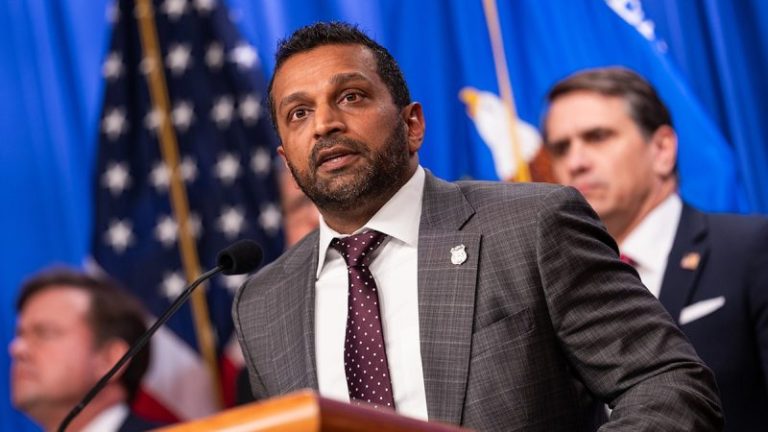On Friday, I debated cannabis legalization at AmericaFest 2025, the annual convention for Turning Point USA, the group led by Charlie Kirk until his assassination in September. Here’s my opening argument:
My opponent this afternoon is Katherine Mangu-Ward, the editor-in-chief of Reason magazine and a staunch libertarian. Katherine’s pinned post on X calls for the legalization of heroin, so at least she is consistent.
I too am consistent. I believe the liberal and libertarian effort to destigmatize, normalize, legalize, and even promote the use of ‘drugs of abuse‘ has been a catastrophe for the United States.
We are a global outlier on this issue. We have reaped nothing but pain for a generation of ideologically driven decisions to make drugs more accessible to both young people and adults.
By ‘drugs of abuse,’ I mean drugs that produce a subjective high that makes people want to keep using them and to use more over time. The precise biochemical mechanism and whether the high is stimulating, sedating, or intoxicating matters less than the fact of its temporary pleasure. Of course those drugs include cannabis. Yes, alcohol is a drug of abuse too. So are medically prescribed drugs, from Oxycontin to Adderall to Valium.
Unfortunately, Thursday’s decision by President Trump to ‘reschedule’ cannabis and make it more accessible will only worsen this self-imposed crisis and lead to more drug-driven misery and death.
Let’s be clear about cannabis. Cannabis — particularly cannabis today, which is very high in THC, the chemical that intoxicates users — is very much a drug of abuse.
When they have been tested in rigorously controlled trials — and they have been tested over and over — cannabis and THC have shown almost no medical benefits. But they have many side effects, to both brain and body.
Normalizing drug use normalizes drug use. Pretending drugs of abuse are medicine normalizes it even faster.
Cannabis can cause psychotic episodes where users lose touch with reality and become paranoid that friends or family members want to hurt them. It can sometimes cause those users to become violent in response. It can cause episodes of prolonged vomiting that send users to emergency rooms. It is associated with traffic accidents and deaths. It raises the risk of heart attacks in users dramatically. And, yes, it is a gateway drug.
Overall, cannabis is probably at least as dangerous as alcohol. It is less obviously physically harmful, for despite its cardiovascular risks, it does not cause direct overdose. But it is more psychiatrically harmful.
Now we come to the simple, facile libertarian argument: but alcohol is legal! Cannabis should be legal too. In fact, all drugs should be legal — and again, I do appreciate the fact Katherine was honest enough to say that out loud.
My drug, my body, my choice.
Sounds good. Except that to use drugs is inevitably to risk consequences both to yourself and to other people that cannot be foreseen. Drugs follow their own logic.
Some drugs — especially opioids — frequently kill their users from overdose. Many drugs cause users to behave in antisocial ways — to become violent, or simply to stop caring about the possible consequences of their actions. And all drugs of abuse have addictive potential.
The libertarian solution to this problem is to ignore it, to say that users are responsible for their own behavior. If they become addicted, too bad for them.
This theory sounds nice. But it ignores reality.
The children and families around users and addicts inevitably bear the brunt of their antisocial behavior, and the rest of us cannot ignore its public harms. Even when it does not lead to full-bore addiction, drug use that is more than casual almost inevitably worsens the problems users have turned to it to solve. It is the most selfish of acts. It divorces users from the lives of people around them — and their own lives.
A religious person might call that behavior immoral. But one doesn’t have to be religious to recognize it has what economists call externalities. The user feels the subjective pleasure, while everyone else faces the potential consequences.
As a society, we seem to have become desensitized to the potentially horrific consequences of drug use.
We should not be. We must not be.
We — as individuals, and as a nation — must do everything possible to remind people of them. We must discourage it at every turn. That means stigmatizing drugs of abuse, not legitimizing them, not building industries that profit from heavy use and addiction.
It means driving up the price — in dollars and potential legal consequences — of drug use to discourage people who have not used from doing so, rather than making drugs cheap, openly advertised, and easily accessible.
It means understanding that every drug is a gateway drug, not just biochemically but societally. Normalizing drug use normalizes drug use. Pretending drugs of abuse are medicine normalizes it even faster.
Legalization is a red herring. Alcohol is legal, but we arrest people for alcohol consumption all the time — for underage use, for public drinking or intoxication, for drinking and driving. We will continue to arrest people for using cannabis too, even if the drug is fully legalized at the state and federal level.
But whatever the legal status of cannabis, we are not going to put every — or even many — cannabis users in jail. We don’t now, and we didn’t a generation ago.
The question is whether we want encourage use: of cannabis, of Adderall, of alcohol, of OxyCONTIN, of fentanyl, of cocaine, of every legal and illegal drug. Legalizing cannabis is another step on that path to ruination.
I hope we do not take it.
Editor’s note: This column first appeared on the author’s Substack, ‘Unreported Truths.’
This post appeared first on FOX NEWS










